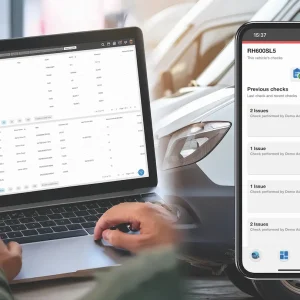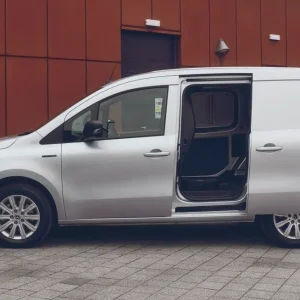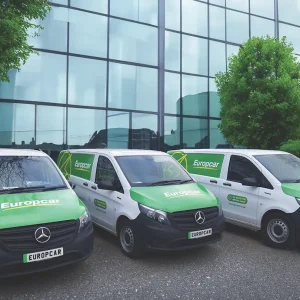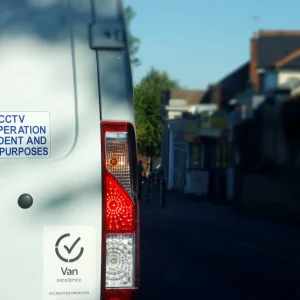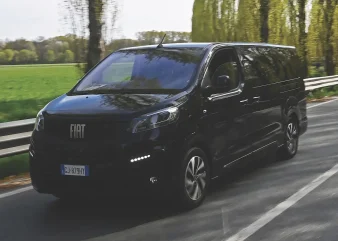
Not so long ago, if you were thinking of buying an E-Scudo, then you were off on holiday to Portugal. Now, the E-Scudo is the replacement for Fiat’s Talento van, recalling the Scudo name from the earliest days of the Sevel-Nord trio of mid-sized vans from Fiat, Citroen and Peugeot.
The E-Scudo hits the sector head-on from a dimensional point of view. Sitting on a generous 3.2 metres wheelbase (to fit in a decent sized 75kWh battery) with an overall length of 4.95 metres, it’s suitable to park on a domestic driveway, is under 1.9 metres tall and has a width of 2.2 metres across the mirrors – or 1.9 metres, mirrors folded, for the tightest gaps.
Inside, that equates to a maximum of 2,510mm of load length, a width of 1,625mm and 1,255mm between the wheel arches, with internal headroom of 1,395mm – all decent figures for a van of this size, and particularly good for one carrying a big battery beneath the floor. Overall volume stands at 5.3m3.
Like so many BEV vans the compromise comes in battery size versus payload. With the smaller 50kWh battery, you can carry up to 1,225kg of cargo, but opt for the longer range of the 75kWh device and it’s just 1,000kg. A diesel Scudo beats the best figure here by 125kg. Towing is an area were BEVs have yet to catch up and the E-Scudo’s trailer mass of 1,000kg is less than half that of the best diesel Scudo.
When it comes to range, the official figure is 206 miles with the larger battery and 142 miles with the smaller. That probably suits the sole trader who can charge at home, or the SME (with overnight charging in the yard) handling facilities management or domestic dwelling call-outs, quite well. As ever, if you are covering large daily mileages, the diesel Scudo with 350 plus miles per tank and a five-minute refuel is still your better option, despite charging at home being between 25–35% of the pence-per-mile costs compared to diesel. With access to fast charging, you can get 80% in the battery inside one-hour, but with a 7.4kW wallbox at home it’s an overnight process.
From the driver’s seat, the E-Scudo is a mixed bag. The cab is not particularly spacious, certainly not compared to a Volkswagen ID. Buzz Cargo. Refinement is assured with just a gentle motor hum and strong acceleration is useful, on the move it feels surprisingly like a torque-y diesel automatic, but near-silent. Utilising all the performance will have a bigger effect on remaining range than a diesel will, however. Standard, ECO and Sport modes change the power, but it’s drivable enough in ECO anyway. You have the option to use ‘B’ (or Brake) setting to give one-pedal driving around town. Equipment levels are good. The Tecnico has twin side doors the ‘Moduwork’ folding dual-passenger seat and bulkhead, cruise control height adjustable driver’s seat, automatic lights and wipers, rear parking sensors and a 7in touchscreen. The Business level adds satellite-navigation, head-up display, front parking sensors and reversing camera.
Overall the E-Scudo offers value for money against the competition and, although it doesn’t stand out, you know what you’re getting – a bit like those holidays to Portugal.
Plus: Low running costs, good battery range, high payload capacity.
Minus: Cramped cab space, diesel version tows more, rapid-charge ability is optional.
Second-hand buys
| Version | Plate | Year | Mileage | Price (ex VAT) |
| Business SWB 134bhp | 22 | 2022 | 5,100 | £19,995 |
| Business SWB 134bhp | 72 | 2022 | 6,300 | £18,995 |
| Business SWB 134bhp | 23 | 2023 | 4,000 | £18,995 |
| Business SWB 134bhp | 24 | 2024 | 2,100 | £23,995 |
| Business SWB 134bhp | 25 | 2025 | Delivery | £29,995 |

